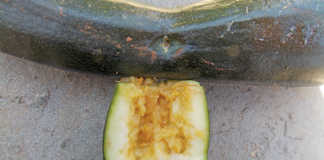Arbuscular mycorrhiza (AM) fungi have a valuable symbiotic relationship with most plants. (There are other types of mycorrhiza, such as an ectomycorrhizal species associated with oak trees that produces truffles.)
AM fungi penetrate the plant root but not the cells. They create an enormous ‘root system’, invisible to the naked eye, that supplies nutrients and water to the plant in exchange for sugars (carbon). In other words, AM substantially adds to the root system of plants.
AM extracts phosphorus (P) from the soil even when it is in a form which cannot be harvested by the plant’s roots. The lower the P content of the soil, the more useful AM is to the farmer. It is also highly efficient at extracting zinc and copper from soil.
There are exceptions. Beet and the cabbage family do not respond well to AM fungi. However, it does work with Swiss chard, which is the same species as beet (Beta vulgaris).
Mycorrhiza do not do well in tilled soil, which is why many of our soils have very low spore counts.
I carried out a trial at my facility with many replications from various AM sources. I did not note any change, but I had been practising no-till for a number of years and my soil was in a particularly healthy state. Clearly, the natural strains had already built up. This could also be partly why those farmers on no-till obtain increased yield.
A remarkable difference
I once visited a seedling nursery that had run a trial with one source of AM containing various strains of AM as well as five strains of Trichoderma asperellum. This species of Trichoderma is particularly good at colonising the rhizosphere. The manager had taken various seed lots and species of vegetable seeds and sown them into seed trays with the AM+ added to half of each tray.
My eyes nearly popped out when I saw the difference; not only were the AM-treated plants much larger than those in the control section, but germination was better even in lots with poor vigour.
This AM mixture was sold in an organic medium and was active, whereas the dry product takes a while to germinate and become established. It is less ideal for seedlings but will benefit transplanted seedlings.
For clarification on the subject, I contacted the head of the mycorrhiza repository in the US. He assured me that AM would not work in a bark medium as the phenols would kill the fungi. I then spoke to the person making the AM+ product; she told me that in many cases the bark had decomposed enough to lower the phenol rate and allow the AM to grow.
I was witness to another marvellous result. A farmer at Komatipoort told me he was no longer considering planting peppers, as no matter what he did, he still struggled with low yield. Some time later when I visited him, he took me to a land and stood in the middle of what looked like two separate plantings spaced a month apart.
He told me that he had placed some of the active medium containing AM in each planting hole and this had made the difference. The untreated section was as poor as his previous results.
A multi-faceted resource
AM sources nutrients and moisture and reduces disease, while the glomalin from which the ‘roots’ are formed makes excellent, stable humus. AM is an under-utilised resource. It’s certainly worthwhile to test whether the fungi is present in your soil. AM products can also be sourced using the Internet.












